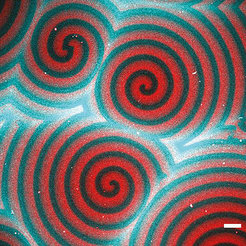A novel form of cellular logistics
Biophysicists have shown that a phenomenon known as diffusiophoresis, which can lead to a directed particle transport, can occur in biological systems.
In order to perform their biological functions, cells must ensure that their logistical schedules are implemented smoothly, such that the necessary molecular cargoes are delivered to their intended destinations on time. Most of the known transport mechanisms in cells are based on specific interactions between the cargo to be transported and the energy-consuming motor proteins that convey the load to its destination. A group of researchers led by Petra Schwille of the Max Planck Institute for Biochemistry and LMU physicist Erwin Frey, Chair of Statistical and Biological Physics, has now shown for the first time that a form of directed transport of particles can take place in cells, even in the absence of molecular motors. Furthermore, this mechanism can sort the transported particles according to their size, as the team reports in the latest issue of Nature Physics.

The study focuses on the MinDE system from the bacterium E. coli, which is an established and important model for biological pattern formation. The two proteins MinD and MinE oscillate between the poles of the rod-shaped cell and their mutual interaction on the cell membrane ultimately restricts the plane of cell division to the center of the cell. In this case, the researchers reconstructed the pattern forming MinDE system in the test-tube, using the purified Min proteins and artificial membranes. As expected from previous experiments, when the energy-rich molecule ATP was added to this system, the Min proteins recapitulated the oscillatory behavior seen in bacterial cells. More importantly, the experimenters went on to demonstrate that many different kinds of molecules could be caught up in the oscillatory waves as they traversed the membranes – even molecules that have nothing to do with pattern formation and are not found in cells at all.
A sorting machine for DNA origami
In order to analyze the transport mechanism in greater detail, the team turned to cargoes that consisted of DNA origami, and could be anchored to the membrane. This strategy allows one to create molecular structures of varying sizes and shapes, based on programmable base-pairing interactions between DNA strands. “These experiments showed that this mode of transport depends on the size of the cargo, and that MinD can even sort structures on the basis of their size,” says Beatrice Ramm, a postdoc in Petra Schwilles department and joint first author of the new study. With the aid of theoretical analyses, Frey’s group went on to identify the underlying transport mechanism as diffusiophoresis – the directed motion of particles along a concentration gradient. In the Min system, the friction between the cargo and the diffusing Min proteins is responsible for the transport of the freight. Thus, the crucial factor in this context is not a specific set of biochemical interactions – as in the case of transport via motor proteins in biological cells – but the effective sizes of the particles involved. “Particles that are more strongly affected by friction, owing to their large size, are also transported further – that’s what accounts for sorting on the basis of size,” says Andriy Goychuk from the LMU, also joint first author of the paper.
With these results, the team has demonstrated the involvement of a purely physical (as opposed to a biological) form of transport based on diffusiophoresis in a biological pattern-forming system. “This process is so simple and fundamental that it seems likely that it also plays a role in other cellular processes, and might even have been employed in the earliest cells at the origin of life,” says Frey. “And in the future, it might also be possible to make use of it to position molecules at specific sites within artificial minimal cells,” he adds.
Original Publication:
B. Ramm*, A. Goychuk*, A. Khmelinskaia, P. Blumhardt, H. Eto, K. A. Ganzinger, E. Frey & P. Schwille: A diffusiophoretic mechanism for ATP-driven transport without motor proteins, Nature Physics, April 2021
*shared first authorship
DOI: https://dx.doi.org/10.1038/s41567-021-01213-3










